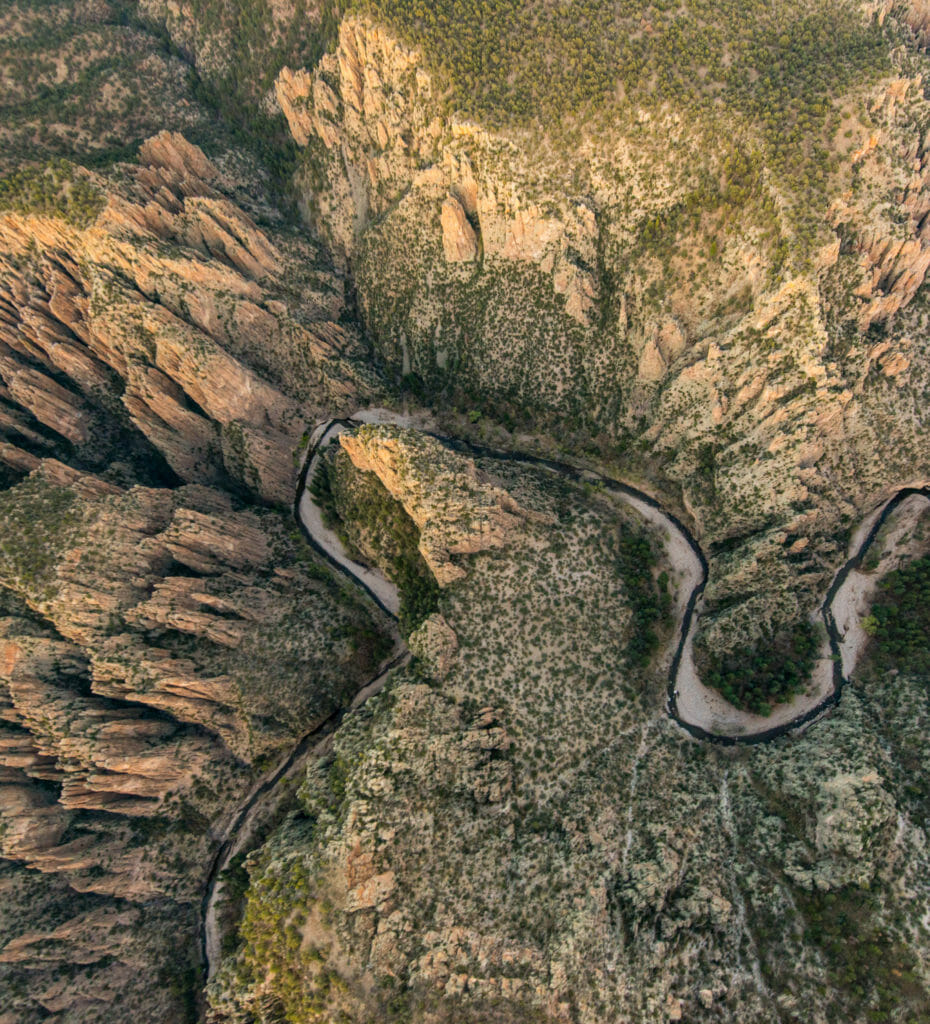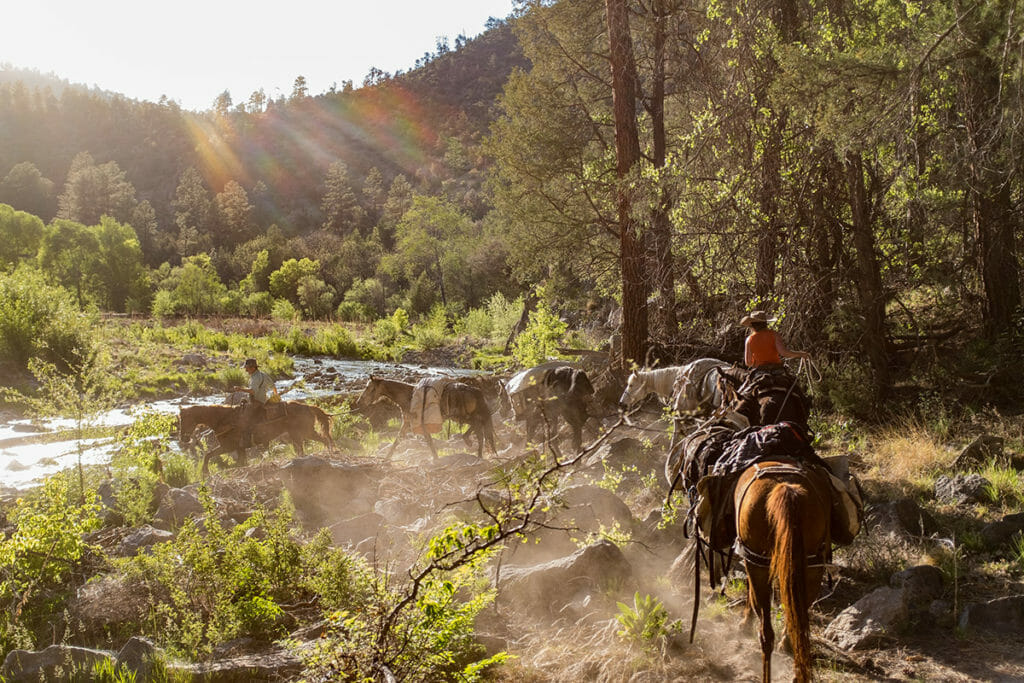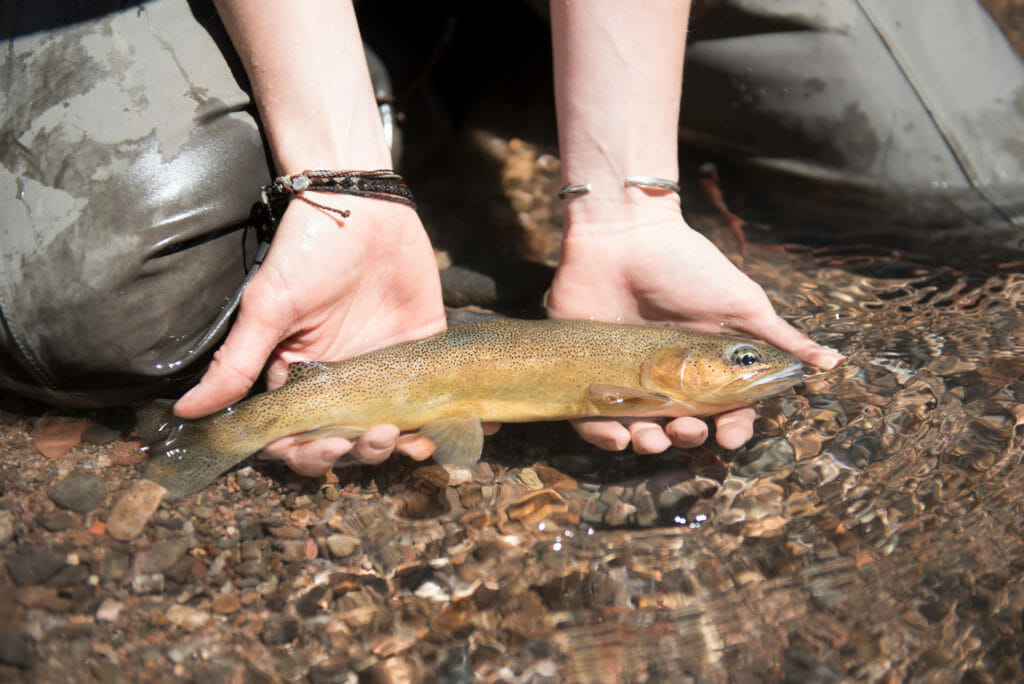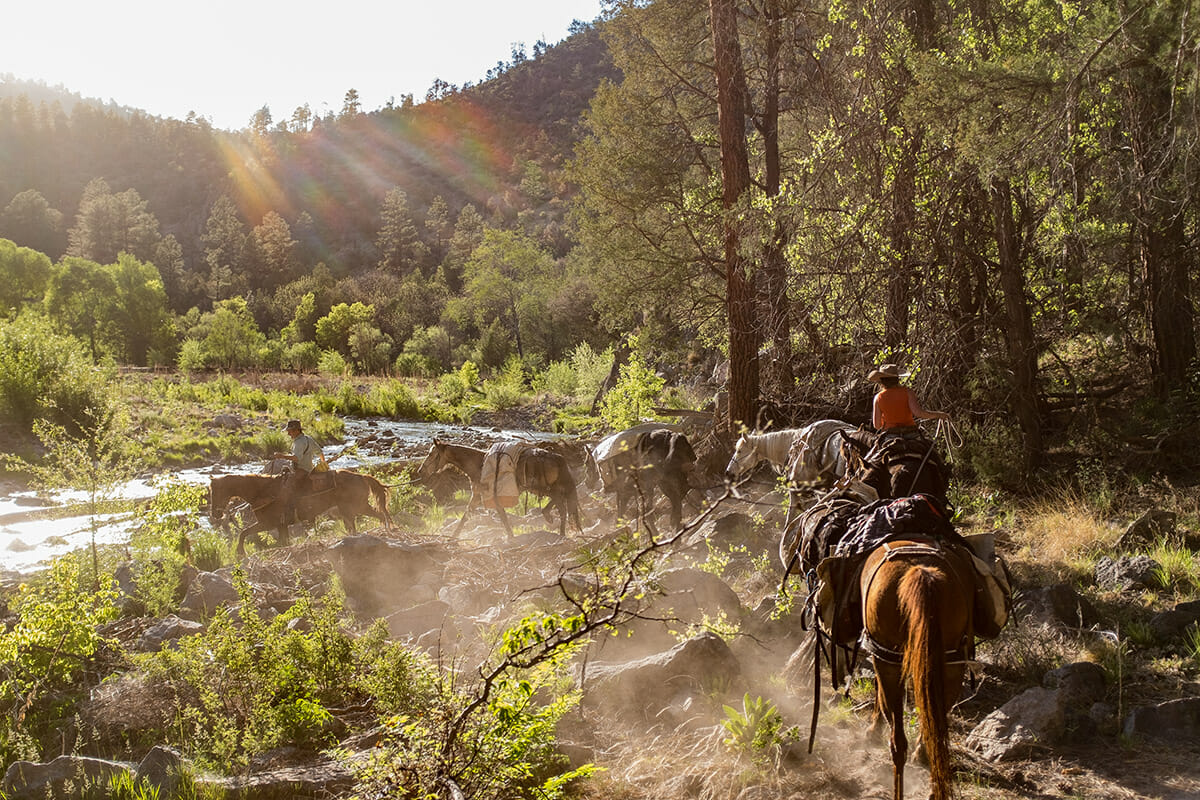
By Dan Roper
Restoring watersheds and protecting clean water are at the heart of Trout Unlimited’s work in New Mexico. But to protect our favorite rivers and streams, we need a tool that preserves their outstanding values and free-flowing nature.
The Wild and Scenic Rivers Act of 1968 was created to do just that, making it the policy of the United States that certain rivers “shall be preserved in free-flowing condition, and that they and their immediate environments shall be protected for the benefit and enjoyment of present and future generations.” Today, this landmark law remains the highest form of protection for rivers in the United States.
In southwest New Mexico, we have a unique opportunity to protect two of the last free-flowing rivers in the American Southwest – the Gila and San Francisco Rivers. Recently, New Mexico Sens. Tom Udall and Martin Heinrich introduced legislation known as the M.H. Dutch Salmon Greater Gila Wild and Scenic River Act. If passed by Congress and signed into law, it would represent the largest designation of wild and scenic rivers in the state’s history, in the heart of one of the nation’s most iconic landscapes.
 Pack trip into the Gila Wilderness in southern New Mexico.
Pack trip into the Gila Wilderness in southern New Mexico.Anyone who’s ever backpacked under the towering pines and canyon walls along the forks of the Gila River or fished for Gila trout in the cold, clear tributaries that pour from the rugged mountains of the Gila and Aldo Leopold Wilderness Areas, understands just how special this place is. To forever protect the wild waters of America’s first wilderness is only fitting.
The legislation honors the life and advocacy of M. H. “Dutch” Salmon, a long-time advocate for the Gila River, perhaps best known for a 200-mile wilderness canoe run down the river with his dog and cat, which he chronicled in his bestselling book, Gila Descending. The 1983 trip was inspired by the first of many dam proposals on the Gila River, and he continued his advocacy on behalf of the region’s wild rivers throughout his remaining years, helping stop three diversion projects on the Gila River and opposing recent schemes by the New Mexico CAP Entity. He also co-founded the Gila Conservation Coalition 1984 to protect the region’s rivers and surrounding public lands.

M.H. “Dutch” Salmon was an
impressive advocate for the Gila
The legislation would designate over 440 miles of the Gila and San Francisco Rivers and many of their main tributaries as wild, scenic, and recreational waters. The proposal includes nearly all of the coldwater habitat occupied by native Gila trout, a species currently listed as threatened under the Endangered Species Act and inhabiting only seventeen streams in New Mexico, all of which are slated for increased protections under the Act.
This includes streams like Mineral Creek and Whitewater Creek, two tributaries to the San Francisco that flow wild from their headwaters in the Gila Wilderness to the wilderness boundary and have been at the center of efforts to recover native Gila trout. It also includes Willow Creek, where the Rio Grande/Gila chapter of TU gathers members and volunteers twice each year to collect data and stream measurements to guide future habitat improvements to benefit native fish; and Spruce Creek, a remote tributary and source of the fifth remnant Gila trout population, the genetically distinct Spruce Creek lineage.
The proposal also includes Las Animas Creek, home to the southernmost population of Rio Grande cutthroat trout, New Mexico’s only other native trout species.

Gila trout deserve protection by implementing Wild & Scenic protections
For decades, water boosters have developed plan after plan to construct damns, diversions, pump stations and all sorts of ill-conceived projects to create reservoirs, roads and infrastructure where today these wild rivers still flow. Permanent protection of these rivers through wild and scenic designation would help put the worst of these schemes to bed for good while still protecting individual water rights in the region and economic activities like farming and ranching.
Just last month news surfaced of yet another ill-advised plan. This time it’s a proposal to construct a 200-foot dam across the San Francisco River, proposed by the same company behind plans to build similar projects on the Little Colorado River just miles outside of Grand Canyon National Park.
If he were with us today, Dutch Salmon would surely be helping lead the fight against one more threat to the region’s rivers. Passage of the M.H. Dutch Salmon Greater Gila Wild and Scenic Rivers Act presents us with an opportunity to honor Dutch’s lifetime of advocacy for wild rivers by protecting the outstanding values and free-flowing nature of these rivers and streams for good.
Dan Roper is the New Mexico state lead for TU.
How to fly fish the Gila
By Jeffrey B. Arterburn
A fishing trip to the Gila region should begin with a visit to the New Mexico Department of Game and Fish website. Here you can learn more about the species and areas open to fishing, purchase a license, and pick up the required Gila trout fishing permit if you choose to pursue these native trout. The rare and precious Gila trout, native to the Gila River and San Francisco River watersheds in New Mexico, now occupy a fraction of their historic range in the cool canyons and tributaries above 5,000 feet in elevation. Gila trout flash with metallic yellow hues and fine dappled spots above their lateral line, featuring prominent parr marks that fade with maturity.
The Gila region is both vast and remote, with large swaths of national forest and designated wilderness. Vehicular access is limited and many of the best fishing spots are only accessible by foot or hoof. You can choose between streams containing genetically pure populations of Gila trout protected by natural or constructed barriers and “recreational” streams where Gila trout have been reintroduced without prior removal of wild rainbows, resulting in mixed Gila-rainbow hybrid populations. Other fish species of interest to anglers are also found in these waters, including brown trout, smallmouth bass, native chubs, suckers and catfish.
Gila streams present a wide variety of water types, from the open sheer-walled canyons of the mainstem and three major forks, to tiny brush-covered trickles. A full course of aquatic and terrestrial foods appear on the menu throughout the year, including stoneflies, caddis, mayflies, crayfish, minnows, dobsonflies (hellgrammite), dragonflies and damselflies. Many anglers find that a single fly will produce almost anytime: a dark colored No. 10 Wooly Bugger drifted, stripped or fished on the swing. But Gila trout readily take a variety of dry flies, nymph’s and streamers, and many standard patterns are successful, with favorites including: Troth’s Elk Hair or Mathews’ X-Caddis, soft-landing Parachute Adams, Griffith’s Gnat, Stimulators and hoppers. Don’t forget to add a dropper, and bead head nymph patterns such as Pheasant Tail, Hares Ear, Zebra Midge, Prince or a Wired Stonefly. All are effective. Water temperatures can be critical, driving fish deep in search of cooler, well-oxygenated refuge when it’s warm. Fish the deep pools along the canyon walls, where the larger fish hold in the prime well-protected lies. One of these spots provided my largest Gila trout on a No. 18 Bead-head Pheasant Tail nymph pattern. Anglers are encouraged to monitor water temperatures and avoid fishing during periods of excessive heat for successful catch and release.
Careful approach and presentation are often critical factors, delivering the fly to the right spot without disturbing the pool. While 3-6 weight rods are appropriate, most times I prefer a 3-weight rod in lengths from 7-1/2 to 9 feet and 4 or 5 sections that allow it to be safely stowed in the pack for the hike in. Fishing the main stem and forks will involve many, many river crossings, and it’s typically most comfortable to wet wade in sturdy wading or flats-style boots, quick-dry pants to protect from the sun and sharp stinging things, and a wading-hiking stick for staying upright while covering rough country and slippery rocks. Avoiding heat exhaustion is critical, and a water bladder in the pack with a bite valve for constant sipping makes it much easier to stay hydrated. Anglers are cautioned to pay attention to the weather and alert to the danger of flash floods, particularly in narrow canyons and areas of fire damage. Wet years can be wonderful with fish widely distributed, and dry years will hurt your heart and may cause you to question your faith, but the resilience of these unique native trout and the alluring scenic beauty of the Gila will bring you back.
Jeff is president of the Gila/Rio Grande Chapter of Trout Unlimited in southern New Mexico, and Professor of Chemistry & Biochemistry at New Mexico State University



